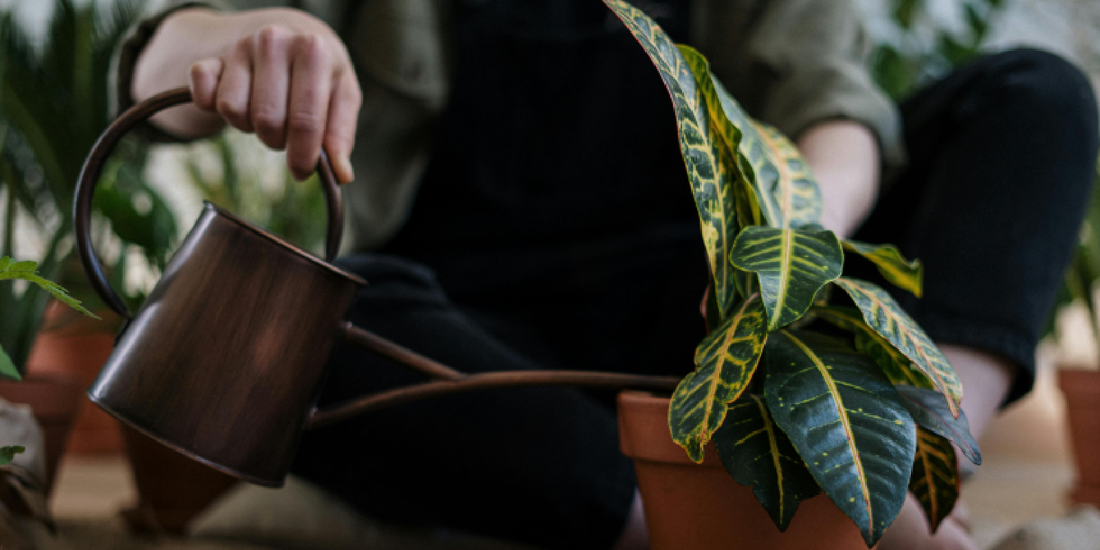
Do Plants Need Darkness to Grow?
Share
Indoor gardening often focuses on light—how much, what kind, and for how long. But there’s a question many new plant parents overlook:
Do plants need darkness to grow?
The answer is yes—darkness is just as essential to plant health as sunlight or grow lights. While light powers photosynthesis, darkness enables rest, repair, and hormonal balance. In this blog, we’ll explore how and why plants benefit from darkness, and how to set a healthy light/dark cycle for your indoor garden using tools like the amoyls VerdantGlow S-Shaped 8-Tier Plant Shelf with Grow Lights.
🌱 The Role of Light in Plant Growth
Light is essential to photosynthesis, the process through which plants convert light energy, water, and carbon dioxide into glucose—their food. During the day, light triggers chlorophyll in leaves to absorb energy and drive growth.
Without enough light, plants become:
- Leggy (long, stretched stems)
- Pale or yellow
- Slow to grow
- Prone to disease and decay
This is why grow lights are a cornerstone of modern indoor gardening.
But here’s the twist: more light doesn’t mean more growth.
🌙 Why Plants Need Darkness Too
Just like humans, plants operate on an internal 24-hour clock known as the circadian rhythm. This biological rhythm regulates:
- Photosynthesis during daylight
- Respiration and energy release at night
- Hormone production
- Flowering cycles
- Nutrient transport and root activity
During the dark cycle, plants:
- Break down stored energy (sugars)
- Repair cellular damage from sunlight
- Produce growth hormones like auxins
- Prepare for the next photosynthesis cycle
In other words, darkness is when plants rest and build.
🔬 What Happens If You Don’t Give Plants Darkness?
Using grow lights 24/7 may seem like a growth booster, but it leads to stress and decline. Here’s what can happen:
|
Without Darkness |
Effect on Plants |
|
Constant photosynthesis |
Overproduction of sugars, leaf damage |
|
No respiration balance |
Poor nutrient transport, root issues |
|
Interrupted hormone production |
Abnormal stem elongation or no flowering |
|
Circadian rhythm disruption |
Slow growth, poor leaf development |
|
Overexposure to artificial light |
Scorching, dryness, heat stress |
🚫 Bottom line: Plants need at least 6–8 hours of uninterrupted darkness every 24 hours.
🕒 The Ideal Light/Dark Schedule for Indoor Plants
The perfect grow light cycle depends on your plant type. Here's a helpful table:
|
Plant Type |
Light Hours |
Darkness Needed |
Total Cycle |
|
Herbs (basil, mint) |
12–16 hours |
8–12 hours |
24 hours |
|
Succulents & cacti |
12–14 hours |
10–12 hours |
24 hours |
|
Leafy greens (lettuce) |
14–16 hours |
8–10 hours |
24 hours |
|
Houseplants (pothos, ferns) |
10–12 hours |
12–14 hours |
24 hours |
|
Flowering plants |
12–14 hours |
10–12 hours |
24 hours |
🛠 Tip: Set a grow light timer to turn lights on and off automatically. This keeps the cycle consistent—even if you forget.
🌿 Photoperiod: The Science of Light Cycles
Plants fall into three photoperiod categories based on how much darkness they require to bloom:
- Short-day plants
- Flower when nights are longer than 12 hours
- Examples: chrysanthemums, poinsettias
- Long-day plants
- Flower when nights are shorter than 12 hours
- Examples: spinach, lettuce, basil
- Day-neutral plants
- Flower regardless of day length
- Examples: tomatoes, cucumbers, peppers
🌼 Flowering depends not just on light—but on darkness.
🪴 How to Set a Balanced Schedule with the VerdantGlow Shelf
The amoyls VerdantGlow Plant Shelf is designed for optimal light control:
- Built-in full-spectrum LED grow lights per tier
- Compact S-shaped design for efficient light dispersion
- Smart plug compatibility to automate light/dark cycles
- Separate shelf zones for different plant types and needs
Here’s how to use it to create a perfect rhythm:
- Plug each shelf into a timer
- Example: 7 AM ON → 9 PM OFF (14 hours light / 10 hours dark)
- Group plants by light needs
- Top shelves: succulents & herbs
- Mid shelves: greens & flowering plants
- Lower shelves: shade-tolerant houseplants
- Rotate plants every few days
- Ensures even light exposure and natural shaping
🌿 What Darkness Should Look Like
When we say “darkness,” we don’t mean dim lighting—we mean complete darkness, as close to natural night as possible.
Avoid:
- Nearby TV or phone screens
- Streetlights shining through windows
- Leaving overhead lights on at night
If your plant setup is in a bright room at night, consider:
- Using blackout curtains
- Moving plants to a darker space after lights off
- Covering with a breathable blackout tent or cloth (especially for flowering species)
🌌 True darkness triggers growth hormones and resets your plant’s biological clock.
🧪 Signs Your Plant Is Missing Its Dark Period
If you’re accidentally running your grow lights too long—or exposing plants to too much ambient light—you may see:
- 🌱 Excessively long stems (legginess)
- 🍃 Small, weak, or pale leaves
- 🌸 Failure to bloom
- 😓 Drooping or wilting despite proper watering
- 💤 No visible growth over time
🎯 Solution: Immediately reduce light exposure and create a strict light/dark cycle.
🌞 Can You Give Plants Too Much Darkness?
Yes—too much darkness can also cause problems:
- Stalled photosynthesis
- Leaf drop or yellowing
- Root rot from prolonged damp soil
- Mold or mildew in low airflow setups
Balance is key.
🔁 Real-World Example: VerdantGlow in Action
Let’s say you’re using the VerdantGlow Shelf to grow:
- Top tiers: Basil, rosemary, succulents
- Middle tiers: Lettuce, spinach
- Lower tiers: Pothos, ferns
Here’s an ideal light/dark schedule:
- 6:30 AM – Lights ON
- 8:30 PM – Lights OFF
- 14 hours light / 10 hours dark
🌱 Each level of the VerdantGlow gets the right amount of exposure—and your plants get the night’s rest they need.
🧘 Final Thoughts: Growth Needs Rhythm
In nature, plants rise with the sun and rest with the moon. Indoor plants are no different.
Giving your plants a healthy rhythm of light and dark isn’t just about mimicking nature—it’s about maximizing:
- Growth
- Health
- Flowering potential
- Lifespan
The amoyls VerdantGlow S-Shaped Shelf makes it easy to control both sides of the cycle, so your plants flourish—day and night.
🌿 Don’t just give your plants light. Give them balance.
🌟 Ready to Grow Smarter?
If you’re looking for a grow light shelf that supports full plant health—from lighting to layout to rhythm—explore the amoyls VerdantGlow Collection.
Want more plant care insights? Visit the amoyls Blog for expert tips on lighting, humidity, soil, and more.
